Bronze Viper Mark II
Modeling a BSG space fighter in bronze.
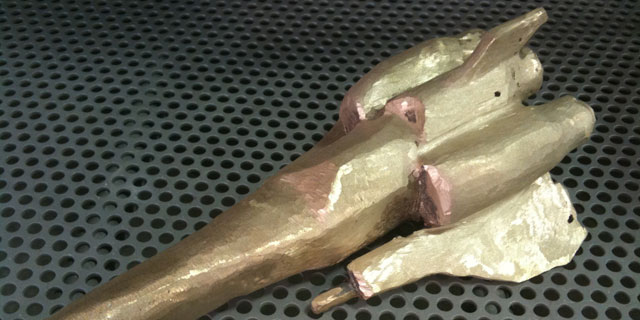
Process
As a personal tribute to Ron Moore's concluded Battlestar Galactica series, I desired to model my first major bronze sculpture after the Viper Mark II space fighter. With a 10"-length seeming a reasonable size, scaled orthogonal imagery guided the initial wax sculpture. Developing it in pieces, various available plaster molds provided approximate matches for most sections.1 The flattened body of a flask served as the wings; three tubular lightbulbs substituted as engines; and a pistol barrel acted as the fuselage. A butane torch heated various handheld sculpture tools to carefully melt and ply the wax into the final form.2

1 A printed scale models the developing wax form.
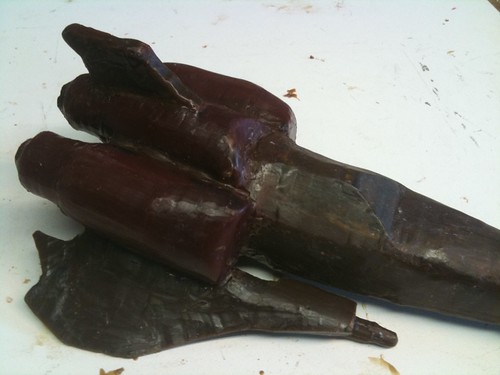
2 The wax pieces melt together, forming the final fighter.
To prepare the wax positive for the plaster negative, additional wax branches fuse to the fighter to act as a funnel and channel for the eventual flow of melted bronze.3 To prepare the plaster mold, a cylindrical cage of chicken wire provides structural support around the centered wax and a tarp-like paper temporarily encases the cage to constrain the curing plaster.4
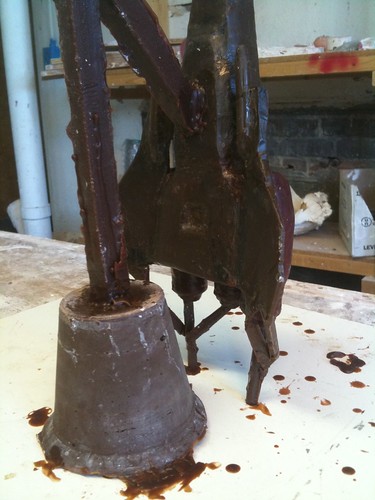
3 A wax tree acts as a conduit for liquid bronze. The cup funnels the metal and branches escape trapped air.
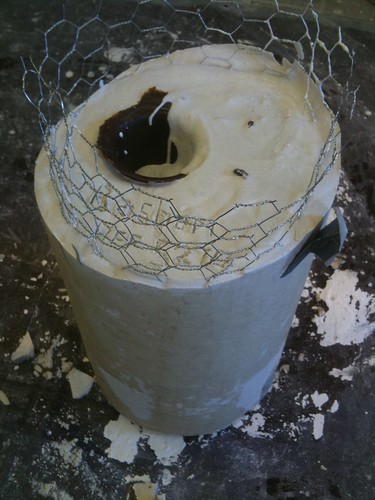
4 Displacing curing plaster with the wax positive eventually forms the plaster negative.
Flipping the solidified plaster upside-down, a kiln liquifies and drains the wax positive from the plaster negative. The plaster is placed in a sand pit for structural support and insulation before a crucible of melted bronze pours into the plaster funnel.5 Once sufficiently cool, the plaster is removed from the pit and shocked in lukewarm water to compromise the material for easy dismantling.6 Softening remaining plaster in water allows a wire brush to scrap and remove any cruft.7 Angle grinders cut excess branches and roughly buff the bronze.8 The piece is sand blasted to reach small, untouchable crevices and to texture it with a sparkling finish.9

5 Melted bronze pours from a crucible into the funnel openings of the plaster mold.

6 Once cooled, the bronze form is busted from its plaster shell.
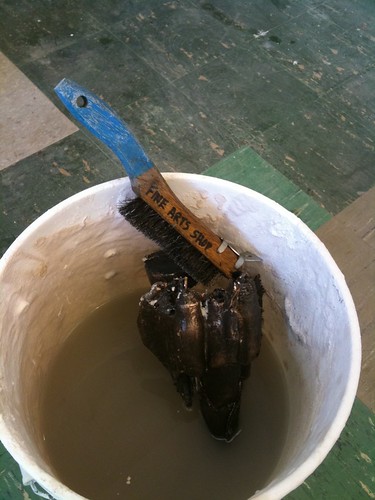
7 Wire brushing the dampened sculpture scrubs away excess plaster.
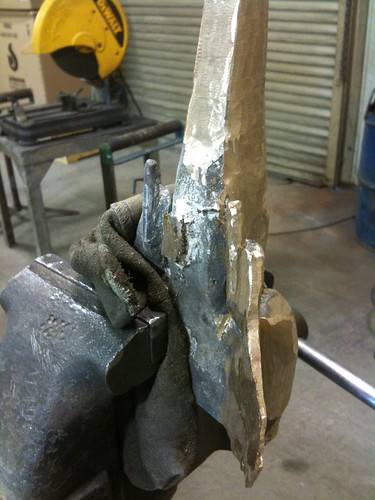
8 Angle grinding the fighter smooths the metal and adds sheen.
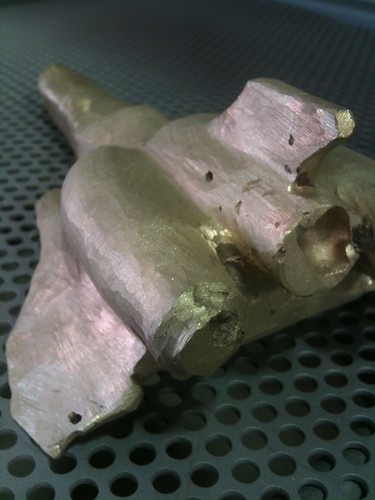
9 Sand blasting uniformly textures with a sparkle finish.
Reflection
Though forming wax may be tedious, it is substantially easier to modify than bronze. Much of any tediousness can be cured by finding the right tool for the job. While initially, it was tempting to be proficient with one wax carving tool, experimenting with a variety tools is the best way to discover the ideal setup.
Also, building the wax tree and branches is one of the most crucial steps, as it has to be strong enough to survive the pouring and curing of the plaster. Originally, the tree was designed upside-down from its final form.3 As the center-of-gravity was too high, it was unstable, toppled and shattered both tree and fighter.
Additionally, melted and curing bronze is completely unpredictable. A wax positive may be perfect to the artist, but the final piece probably won't conform to that standard. For example, some of the fighter's wing chipped and the center engine concaved.9 However, these imperfections establish the piece's character.